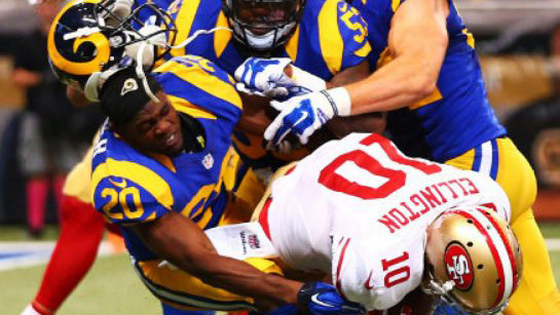Toronto Star article:
By: Bruce Arthur Sports Columnist,
Published on Fri Oct 17 2014

Lamarcus Joyner of the St. Louis Rams loses his helmet during Monday night's game against the 49ers. (Photo: Dilip Vishwanat / GETTY IMAGES)
The slices of brain are so thin that they are barely there, trapped in a glass slide, each one a piece of a very large map. They have splotches of brown splashed through those minds, rotten patches. Some are the brains of retired CFL players; some are people with a less specific history of head trauma. One was an NHL player. His name cannot be revealed because the family has not given consent for that yet. But his brain tells a story.
"It's the cortex of a young man, in his 30s," says Dr. Lili-Naz Hazrati, a lead neuropathologist on the Canadian Sport Concussion Project, in her office at Toronto General Hospital, steps away from the autopsy room. "(In life), the man has symptoms, quite debilitating symptoms. He's not demented, but he used to take photos of things, just to remember. Disturbed, in many ways. And when I looked at the brain, you remember the crowding of the brown stuff?" She frowns. "The only thing I had was this."
The slide shows dots of tau protein, but only dots, spread apart. Tau is the key element of chronic traumatic encephalopathy, or CTE, the neurological disease that has been linked to brain trauma in football and hockey. In severe cases the tau clusters around neurons and, when stained properly, you can see it leaching throughout a dissected brain.
